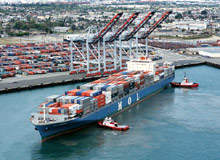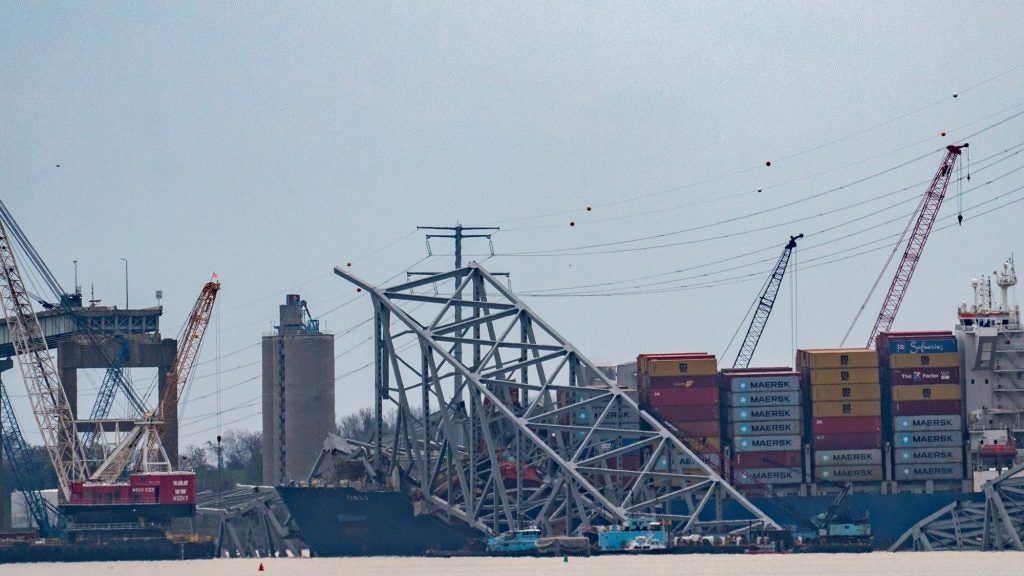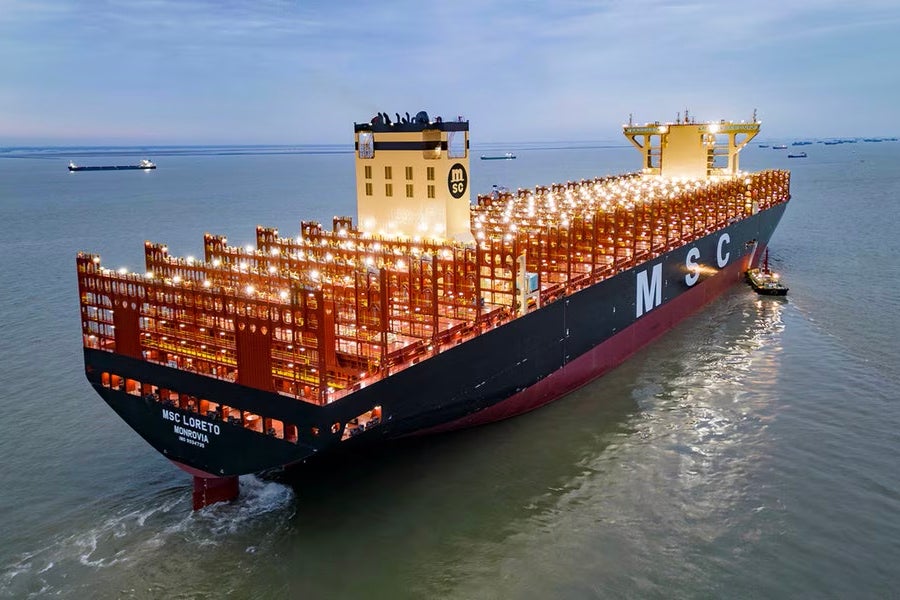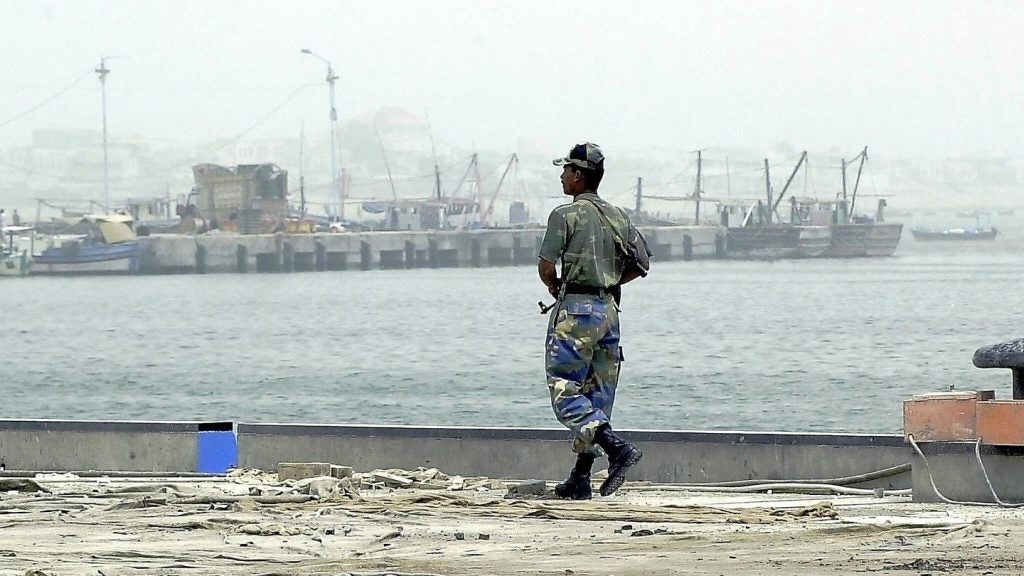
Port of Singapore, Singapore
- Total cargo volume: 471 million tons (2009)
- Container traffic: 25 million TEU (2009)
The Port of Singapore handles a vast array of cargo, including containers and conventional and bulk cargo. The Maritime and Port Authority of Singapore (MPA) oversees the development of the port acting as its port authority, regulator, planner and national maritime representative. The port has a number of terminal operators, including Jurong Port Pte Ltd and PSA Corporation.
According to some sources, Singapore is the world’s busiest port in terms of total shipping tonnage and tranships a fifth of the world’s shipping containers and half of the world’s annual supply of crude oil. Given the nation’s lack of land and natural resources, the port plays a critical role in importing natural resources and exporting them after they have been refined.
Last year the MPA revealed it was aiming to develop the Port of Singapore into a centre of excellence for maritime research and development over the next 15 years. In particular it aims to focus on emerging technologies such as clean technologies for more eco-friendly shipping.
Port of Shanghai, China
- Total cargo volume: 368 million tons (2009)
- Container traffic: 28 million TEU (2009)
The Port of Shanghai has three major container port areas: Wusongkou, Waigaogiao and Yangshan, which collectively, from 2001 to 2006, saw container throughput almost quadruple.
How well do you really know your competitors?
Access the most comprehensive Company Profiles on the market, powered by GlobalData. Save hours of research. Gain competitive edge.

Thank you!
Your download email will arrive shortly
Not ready to buy yet? Download a free sample
We are confident about the unique quality of our Company Profiles. However, we want you to make the most beneficial decision for your business, so we offer a free sample that you can download by submitting the below form
By GlobalDataIts non-container terminals play an essential role in serving the economic development of the Yangste River Valley, with a terminal situated on the banks of the Huangu River acting as a regional distribution centre.
As well as being an important transport hub for the Yangste River region, which has a strong agricultural and industrial base, it acts as one of China’s most important gateways for foreign trade. A number of new technologies have been implemented across the port in recent years including an unmanned automatic container yard, which can handle 21,685 TEU.
Port of Hong Kong, Hong Kong
- Total cargo volume: 245 million tons (2007)
- Container traffic: 23 TEU (2007)
The Port of Hong Kong is one of the few major international ports in the world to be financed, owned and operated by the private sector. It is one of the busiest ports in the world in three categories – shipping movements, cargo handled and passengers carried.
The port is a vital entry point into southern China, with about 70% of container traffic handled in Hong Kong being related to that region, which is one of the world’s fastest industrialising areas. It also handles 88% of Hong Kong’s total cargo throughput and has an integral role in the global supply chain with 450 container liner services per week to over 500 destinations worldwide.
Port of Shenzhen, China
- Total cargo volume: 199 million tons (2007)
- Container traffic: 21 million TEU (2007)
Shenzhen Port is located in China’s Guandong Province on the south of the Pearl River Delta adjacent to Hong Kong. From 1979 to 2004, the port invested over 30bn yuan in the construction of port infrastructure facilities in a number of areas including Shekou, Chiwan, Mawan, Yantian, Dongjiaotou, Fuyong, Xiadong, Shayuchong and Neihe. It currently has 140 berths, of which 51 are of 10,000dwt or above.
The total length of the port’s coastline amounts to over 22km and it has an annual handling capacity of 83.764 million tons. The port is thought to be home to 39 shipping companies, which have implemented 131 international container routes and 21 feeder routes to other ports in the Pearl River Delta region.
Port of Busan, South Korea
- Total cargo volume: 243 million tons (2007)
- Container traffic: 11.9 million TEU (2009)
Busan has opened three container ports since 1978 and is fast becoming one of the world’s busiest ports. According to some sources, it has the capacity to handle up to 13.2 million TEU shipping containers a year.
The port is overseen by the Busan Port Authority, which, since 1995, has launched an ambitious 9,154.2bn-won Busan New Port project that it hopes will see the port transformed into a hub for international logistics in Northeast Asia by 2011. New Port will have a cargo handling capacity with a simultaneous berth supply for 30 vessels with a maximum level of up to 50,000t.
Busan’s North Port currently has a vessel berth capacity of 18, with a maximum level of up to 50,000t and a cargo processing capacity of 6.14 million tons a year. Large parts of the other port are focused on the local marine products market. Busan’s South Port, for instance, is occupied by Busan Cooperative Fish Market, which houses over 800t of produce and accounts for 30% of the country’s total volume of marine product consignment sales.
Port of Rotterdam, The Netherlands
- Total cargo volume: 385 million tons (2009)
- Container traffic: 9.8 million TEU (2009)
Situated directly on the North Sea, the Dutch Port of Rotterdam is the largest of its kind in Europe. The port has an annual throughput of more than 400 million tonnes of goods and has more than 500 scheduled line services connecting the city to over 1,000 ports worldwide.
The port and its accompanying industrial area stretch over 40km and encompass 10,000ha of land. As such, the port is equipped to handle chemicals, ores, liquid bulk, dry bulk, vehicles, perishables and general cargo. It has also invested substantially in new infrastructure and industrial sites and is currently preparing the reclamation of almost 2,000 extra hectares of new industrial land off the coast. The Maasvlakte 2 site is seen as essential for creating extra space for future port activities.
Dubai Ports, UAE
- Total cargo volume: 130 million tons (2007)
- Container traffic: 10.6 million TEU (2007)
DP World, which was founded in 2005 following a merger between Dubai Ports Authority and Dubai Ports International, oversees both Dubai’s Port Rashid and Jebel Ali Port. The latter is the world’s largest manmade port and the largest port in the Middle East. In 2008, DPA announced that all cargo operations would be moved from Port Rashid to Port Jebel Ali. Port Rashid is becoming a cruise terminal and mixed-use urban waterfront area.
The Port of Jebal Ali is located 35km south-west of the city of Dubai and covers over 134km² including one million square metres of container yard. Its container freight station also includes 17,400m² of covered storage, over 200,000m² of open storage and a 2,695m² perishables storage facility. The port is linked by Dubai’s expressway system, which offers direct access to Dubai International Airport’s cargo village.
Port of Kaohsiung, Taiwan
- Total cargo volume: 149 million tons (2007)
- Container traffic: 10.2 million TEU (2007)
The Port of Kaohsiung is located in Southern Taiwan and is the nation’s largest port. It is overseen by the Kaohsiung Harbour Bureau, which is a division of the central government’s Ministry of Transportation. The port has over 100 berths. It also has 65 warehouses and transit sheds that can store over 929,000t of cargo as well as seven outdoor yards that can handle more than 35,000t of cargo.
Kaohsiung is an important manufacturing city and the 2,200ha Linhai Industrial Park is located in proximity to the port, which contains a shipyard, a steel mill and a petrochemical complex.
Port of Hamburg, Germany
- Total cargo volume: 140.4 million tons (2008)
- Container traffic: 9.7 million TEU (2008)
Germany’s Port of Hamburg is located 110km from the mouth of the river Elbe. It is the largest port in Germany and according to some sources it is the second largest in Europe.
It has four large container terminals – the Eurogate container terminal, the HHLA container terminal Tollerort, the HHLA container terminal Burchardkai and the HHLA container terminal Altenwerder – each of which are continually expanded to match the changing demands of the market and ship sizes, and 42 additional terminals dedicated to project cargo, liquid cargo, suction cargo, bulk cargo and grab cargo.
Port of Los Angeles, US
- Total cargo volume: 59.4 million tons (2007)
- Container traffic: 6.75 million TEU (2009)
The Port of Los Angeles stretches along 69km of waterfront on San Pedro bay in Los Angeles. The port handles nearly $190bn of cargo each year and in 2002 the port’s homeland security division was created in response to the growing need to make US ports safe against possible terrorist attacks.
The port also has the first container terminal in the world to use alternative maritime power. The technology reduces emissions by allowing container vessels docked at the port to run off shore side electrical power instead of consuming diesel power.







